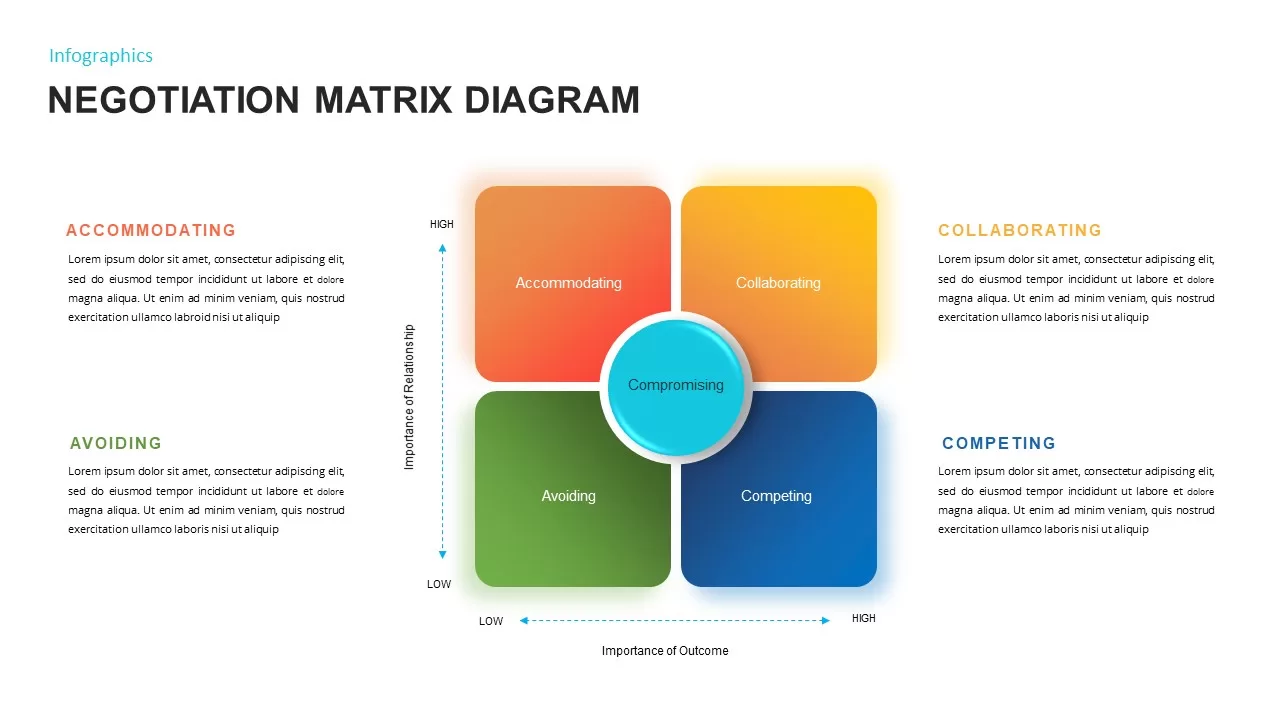negotiation matrix diagram

This Negotiation Matrix Diagram template offers a structured, visual tool for analyzing and understanding negotiation strategies based on the importance of relationships and outcomes. It divides four negotiation approaches—Accommodating, Collaborating, Compromising, and Competing—into a quadrant matrix, allowing users to easily compare and contrast each strategy based on its relative focus on relationship-building versus achieving desired outcomes. The colorful design uses distinct shades for each section, making it easy to identify and understand the different approaches.
The diagram’s layout features two key axes: one representing the importance of relationship and the other the importance of outcome, providing a comprehensive view of how negotiators can balance these factors in different situations. The template includes descriptive text for each negotiation style, allowing for easy customization with specific scenarios or examples. This slide is perfect for business presentations, conflict resolution training, or strategic planning sessions where understanding negotiation dynamics is key.
Fully compatible with PowerPoint and Google Slides, this template enables seamless customization. You can easily modify text, icons, or colors to fit your specific needs. It’s ideal for consultants, team leaders, or HR professionals looking to explain or analyze negotiation tactics effectively.
Who is it for
This template is designed for business professionals, HR managers, consultants, team leaders, and trainers who are teaching or analyzing negotiation strategies. It is also perfect for conflict resolution experts and those involved in corporate or interpersonal negotiation.
Other Uses
Besides its use in negotiating contexts, this matrix can be adapted for analyzing decision-making strategies, conflict management plans, or any framework where two variables—relationships and outcomes—play a critical role. It’s also useful for coaching individuals or teams on how to approach negotiations in various scenarios.
Login to download this file

















































